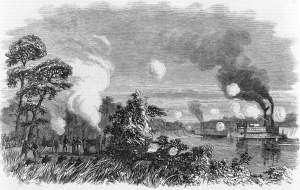Red River Campaign (Joiner, 2006)
Scholarship
During the warm, humid spring of 1864, deep in the interior of the pine barrens and along the sinewy streams of the Red River Valley in northern Louisiana, a drama unfolded that briefly lifted the veil of obscurity from that region west of the Mississippi River. The Union army initiated a bold attempt to capture the Confederate capital of Louisiana at Shreveport. The campaign was considered a high priority by President Lincoln, [Major General William] Sherman, and others in the highest circles of the United States government and military.….The operation taught the army and navy lessons in the critical importance of expanded cooperation between the armed services and demonstrated other scenarios that were unlikely to produce success. And while the Union had tactical and numerical advantages, the campaign proved that overwhelming power is not necessarily a guarantee of victory. The potent combination of politics and forceful personalities also influence military outcomes, often in counterproductive ways.
Gary D. Joiner, Through the Howling Wilderness: The 1864 Red River Campaign and Union Failure in the West (Knoxville: University of Tennessee Press, 2006), xvii-xviii.












































